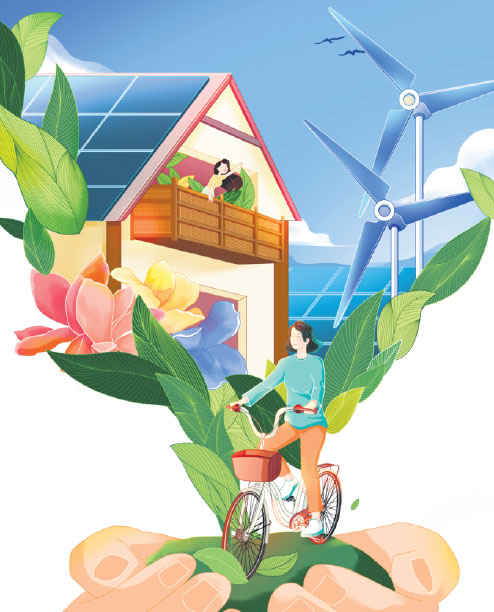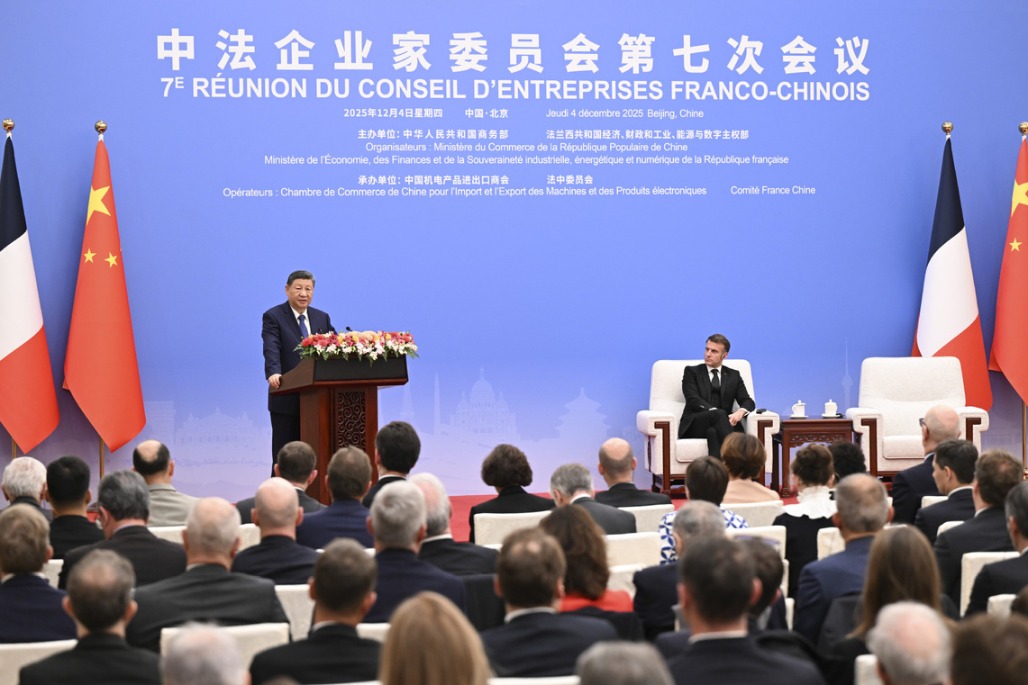Transitioning the energy system
By STEPHANIE JAMIESON/ROBERTO BOCCA | China Daily Global | Updated: 2020-12-02 08:16

Internet of energy will connect the communication, information and energy networks to improve the alignment of supply and demand
At the United Nations General Assembly in September this year, President Xi Jinping said that China will strive to peak its carbon emissions by 2030 and achieve carbon neutrality by 2060.These goals set the tone for major transformation in the years ahead.
China's progress in developing renewables has been impressive-it already has the largest installed capacity of renewables in the world, with more than 360 gigawatts of hydropower, more than 200 GW of wind and more than 200 GW of solar capacity. At the end of 2019, China's total installed capacity of renewables was almost 1.5 times that of the European Union and 2.8 times that of the United States.
Nonetheless, more needs to be done on both the supply and demand side for China to meet its carbon neutrality goal as well as address environmental concerns such as air quality.
The role of science and technology is key. Technologies such as ultra-high voltage transmission systems, big data, cloud computing and artificial intelligence will be the foundation for a sustainable modern energy system. The 1,587 kilometer Qinghai-Henan UHV direct current power line is a good example. When completed, the Qinghai-Henan transmission project will transmit 8 GW of solar and wind generated electricity from remote Northwest China-where renewable resources are abundant-to meet the demand of populous Central China.
Additionally, the "internet of energy", based on a combination of technologies such as AI, big data, cloud computing and the internet of things, is set to be a driver of China's energy revolution. The internet of energy will improve the alignment of supply and demand by connecting the communication, information and energy networks. This infrastructure will enable the integration of large volumes of renewables, while also facilitating the optimization of demand for greater flexibility and the transition to e-mobility.
Besides developing renewable energy, increasing the efficiency of energy supply and innovations in energy end-use will be the keys to a low carbon future. With an estimated 255 million people set to be added to Chinese cities by 2050, clean and sustainable cities will also be a part of the solution.
One example of this is the Winter Olympics, which will be hosted in Beijing and Zhangjiakou, Hebei province, in 2022. The Zhangjiakou-Beijing flexible direct current project is the key to realizing the event's goal of carbon neutrality. Leveraging abundant solar and wind resources in Zhangjiakou, this direct current transmission line project aims to provide 100 percent clean electricity to the Winter Olympics to help it achieve carbon neutrality.
The deployment of electric vehicles will be another lever for decarbonization. China already has the world's largest electric vehicle charging system with close to 1 million charging piles servicing 4.8 million electric vehicles. Continuous development and innovation in the area of charging standards and increasing the adoption rate for electric vehicles will have a major impact on emissions as well as air quality within China and beyond.
Combating the global climate challenge will also require partnerships and cooperation beyond organizational and national borders. Examples include Hitachi-ABB's collaboration with State Grid Corp of China to integrate large-scale renewables into China's power system and the partnership between China Energy Investment Corp and French power company EDF on the 500 megawatts Dongtai offshore wind project.
These success stories highlight how co-innovation, expertise-sharing and co-financing are essential to realizing large-scale, complex clean energy development. Initiatives, such as the Global Energy Interconnection-the idea of meeting the world's energy needs through a globally interconnected electricity grid powered by large-scale renewable sources-and clean energy developments in countries such as Pakistan, Morocco and Egypt, as part of the Belt and Road Initiative also underscore the importance of international cooperation in advancing inclusive, sustainable, low-carbon development.
As Francesco La Camera, director-general of the International Renewable Energy Agency, said on Nov 10 at the International Forum for Energy Transition hosted by State Grid Corp of China in collaboration with the World Economic Forum, transitioning the energy system is not only for the benefit of the planet, but also for advancing the future of billions of people around the world. With COP 26 taking place next year and growing calls for more urgent and ambitious climate actions, now is the time to act. Collectively, we have the chance to shape an energy system that can deliver a low carbon future as well as a shared future of equity and opportunities for billions of people worldwide.
Stephanie Jamieson is a senior managing director and global utilities lead at Accenture. Roberto Bocca is head of Shaping the Future of Energy of Materials and Infrastructure at the World Economic Forum. The authors contributed this article to China Watch, a think tank powered by China Daily. The views do not necessarily reflect those of China Daily.
























